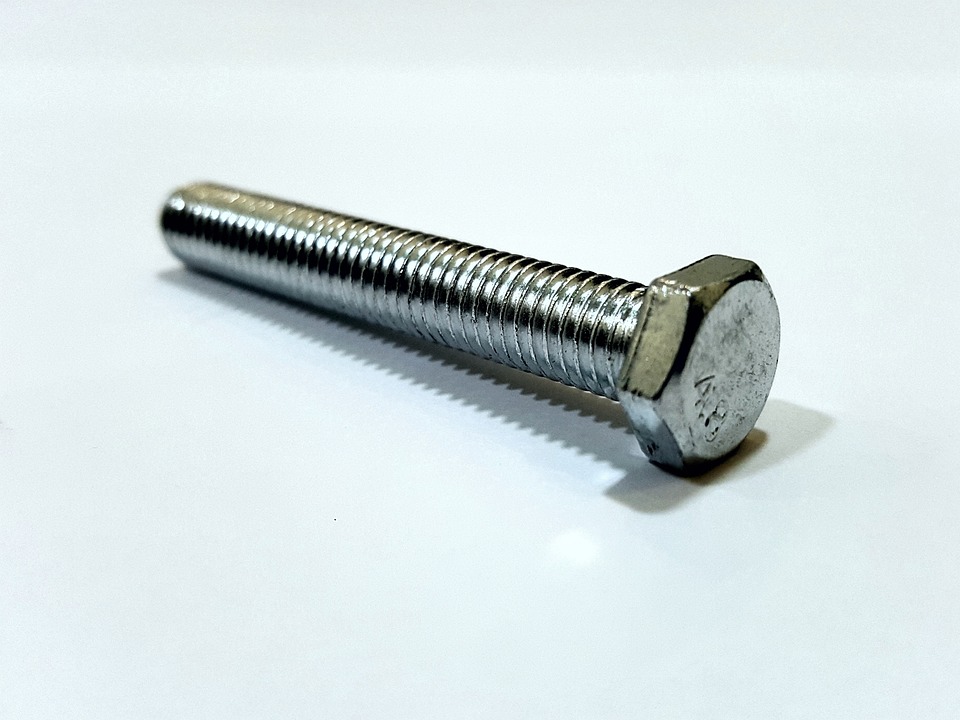How to Find New Orleans Street Food Vendors
How to Find New Orleans Street Food Vendors New Orleans is a city where flavor is woven into the fabric of daily life. From the steam rising off a po’boy fresh from the fryer to the smoky aroma of jambalaya drifting from a sidewalk cart, the city’s street food scene is a living, breathing culinary tradition. Unlike formal restaurants, many of the most authentic and beloved dishes in New Orleans co
How to Find New Orleans Street Food Vendors
New Orleans is a city where flavor is woven into the fabric of daily life. From the steam rising off a po’boy fresh from the fryer to the smoky aroma of jambalaya drifting from a sidewalk cart, the city’s street food scene is a living, breathing culinary tradition. Unlike formal restaurants, many of the most authentic and beloved dishes in New Orleans come not from white-tablecloth establishments, but from mobile vendors—food trucks, pushcarts, and pop-up stalls that move with the rhythm of the city’s festivals, neighborhoods, and seasons. Finding these vendors isn’t just about locating a place to eat; it’s about connecting with culture, history, and community. For tourists seeking genuine experiences and locals looking to rediscover hidden gems, knowing how to find New Orleans street food vendors is essential. This guide provides a comprehensive, step-by-step approach to uncovering the city’s most delicious mobile eats, grounded in practical strategy, local insight, and real-world examples.
Step-by-Step Guide
Finding New Orleans street food vendors requires more than just wandering down Bourbon Street and hoping for a lucky encounter. While that may yield a tourist trap, it won’t lead you to the city’s most cherished culinary secrets. Below is a detailed, actionable roadmap to help you discover authentic street food vendors—no matter when or where you visit.
1. Understand the Street Food Landscape of New Orleans
Before you begin your search, it’s crucial to understand what constitutes street food in New Orleans. Unlike cities where street food is dominated by tacos or dumplings, New Orleans street cuisine is deeply rooted in Creole and Cajun traditions. You’ll find dishes like crawfish pies, muffuletta sandwiches on the go, fried alligator bites, beignets from pushcarts, and grilled corn smothered in Cajun butter. These aren’t just snacks—they’re cultural artifacts served on paper plates.
Street food vendors operate under different rules than brick-and-mortar restaurants. Many are licensed through the City of New Orleans Office of Economic Development, while others operate under special event permits during festivals like Mardi Gras, Jazz Fest, or the French Quarter Festival. Some vendors are permanent fixtures in certain neighborhoods, while others rotate based on demand, weather, and local events.
Knowing this helps you adjust your search strategy. A vendor that appears on a Tuesday in the Marigny may not show up on a Thursday in the CBD. Understanding the rhythm of the city’s food culture is the first step toward finding the right vendors at the right time.
2. Identify High-Activity Zones and Neighborhoods
New Orleans is divided into distinct neighborhoods, each with its own street food character. Targeting these areas increases your chances of success.
French Quarter: The most famous area, but also the most saturated with tourist-oriented vendors. Look away from the main drag of Bourbon Street. Head to Royal Street, especially between St. Peter and St. Ann, where you’ll find local favorites like the Royal Street Cajun Snack Cart and the historic Beignet Cart near Jackson Square. These spots often have loyal regulars and are less likely to be gimmicky.
Marigny and Bywater: These neighborhoods are where locals eat. You’ll find food trucks parked near the intersection of Frenchmen Street and Dauphine, especially in the evenings. Look for trucks with hand-painted signs and minimal branding—they’re often family-run and deeply connected to the community.
Mid-City and Treme: These areas host some of the most authentic, no-frills vendors. The Treme neighborhood is home to the legendary “Crawfish Man,” who sets up near the intersection of North Rampart and St. Philip during crawfish season (roughly January to June). Mid-City has several long-standing food trucks that serve breakfast po’boys and shrimp remoulade sandwiches near the New Orleans Recreation Center.
Uptown and Carrollton: Near the University of New Orleans and along Magazine Street, you’ll find more eclectic offerings—Korean-Mexican fusion tacos, vegan jambalaya, and even New Orleans-style empanadas. These vendors often cater to younger, diverse crowds and may be less visible on traditional maps.
Use a map app to plot these neighborhoods. Mark areas with high foot traffic, public parks, and near transit hubs—these are prime spots for vendors to operate.
3. Leverage Local Social Media and Community Groups
One of the most powerful tools in finding New Orleans street food vendors is social media. Unlike corporate chains, most mobile vendors rely on word-of-mouth and digital presence to attract customers. They rarely maintain websites, but many are active on Instagram, Facebook, and even TikTok.
Start by searching hashtags like:
NOLAstreetfood
NewOrleansFoodTruck
CrawfishCartNOLA
BeignetCart
FrenchmenStreetEats
Follow local food bloggers such as @noladish, @eatsnola, and @theculinarytraveler. These accounts often post daily updates on vendor locations, special menus, and even weather-related cancellations. Many vendors will tag their exact location in stories—sometimes with a live map pin or a photo of their truck parked near a recognizable landmark.
Join Facebook groups like “New Orleans Food Trucks & Mobile Eats” or “Local NOLA Food Lovers.” These communities are filled with residents who post real-time updates: “Just saw the Gumbo Cart on St. Claude near Press St—line was out the door!” or “Crawfish pies are back this weekend at the corner of Elysian Fields and St. Bernard.”
Pro tip: Don’t wait for scheduled posts. Check stories and comments daily. Vendors often announce last-minute appearances in replies or DMs.
4. Use Real-Time Food Truck Trackers and Apps
While New Orleans doesn’t have a city-wide food truck app like some larger cities, several tools can help you track vendors in real time.
Truckeroo is a free app that aggregates food truck locations across the U.S. and includes a growing number of New Orleans vendors. Filter by cuisine type, distance, and hours. It’s not exhaustive, but it’s reliable for major operators like The Gumbo Truck and The Po’boy Factory.
Google Maps is surprisingly effective. Search “food truck New Orleans” and enable the “Open Now” filter. Many vendors have claimed their locations, updated hours, and posted photos. Read recent reviews—especially those with photos. A review from two hours ago saying “Just got here, line is long but worth it!” is more valuable than a 6-month-old comment.
Waze has a hidden feature: users often report “food trucks” as points of interest. If you’re driving through the city, check Waze for recent reports of trucks near your route. You might find a hidden gem parked near a bus stop or church parking lot.
Combine these tools with local knowledge. For example, a vendor might not be listed on Truckeroo but is frequently mentioned on Instagram as being near the St. Charles Avenue streetcar stop on weekends.
5. Visit During Peak Events and Festivals
Some of the best street food vendors in New Orleans only appear during festivals. These events are goldmines for discovering new talent and traditional specialties.
Jazz Fest (April–May): The Fair Grounds hosts dozens of food vendors, many of whom operate year-round elsewhere. Look for the “Local Eats” section near the Gospel Tent. Vendors here often sell limited-run items like alligator sausage po’boys or smoked duck tamales.
French Quarter Festival (April): This free festival features over 100 food vendors, many of whom are local institutions. This is the best time to try dishes like shrimp and grits on a stick or sweet potato beignets—items rarely found elsewhere.
Mardi Gras (February–March): While the parades dominate attention, the side streets are where the real food action happens. Look for vendors selling king cake bites, fried plantains, and hot sausage sandwiches near the intersection of Bourbon and Canal. Many vendors set up on the periphery of parade routes to catch crowds before or after.
Second Line Parades: These spontaneous community celebrations often include food vendors following the parade route. Follow local music groups on Instagram—they’ll often post where they’re playing and which vendors are joining.
Plan your visit around these events. Arrive early, bring cash, and be prepared to wait. The best vendors sell out fast.
6. Ask Locals—The Most Reliable Method
No app, hashtag, or map can replace the advice of a New Orleans local. Whether you’re staying at a hotel, sitting at a bar, or chatting with a street musician, ask: “Where do you get your favorite street food?”
Locals often have specific preferences. One might swear by the crawfish pie cart near the intersection of St. Claude and N. Robertson. Another might insist the best beignets come from a cart that only opens on Sunday mornings in the Bywater. These are the kinds of tips you won’t find online.
Ask questions like:
- “What’s something you eat here that tourists don’t know about?”
- “Is there a vendor that only comes out on rainy days?”
- “Where do you go when you want something spicy and cheap?”
People love sharing their favorites. Be polite, listen carefully, and take notes. Many vendors have no signs—just a familiar face, a cooler, and a folding table. Locals know them by name.
7. Observe Patterns and Timing
Street food vendors in New Orleans operate on schedules that reflect the city’s rhythms. Learn them.
Breakfast (7–11 a.m.): Look for beignet carts, po’boy vendors selling fried egg sandwiches, and coffee carts with chicory blends. These are often near churches, schools, and transit stops.
Lunch (11 a.m.–3 p.m.): This is peak time. Vendors cluster near office buildings, hospitals, and tourist areas. Frenchmen Street, the CBD, and the Warehouse District are hotspots.
Dinner (5–10 p.m.): This is when the real magic happens. Many vendors who don’t show up during the day open at dusk. Look for trucks near parks, music venues, and riverfront walkways. The Cajun seafood truck on the Riverwalk often starts serving at 5:30 p.m. and sells out by 8 p.m.
Weekends: More vendors operate on weekends, especially Saturdays. Sundays are quieter, but some vendors specialize in Sunday brunch items like shrimp and grits tacos or smoked sausage biscuits.
Pay attention to weather. On hot days, vendors selling frozen treats (like sno-balls or frozen lemonade) appear near parks. On rainy days, some vendors move indoors to covered areas or close entirely.
Best Practices
Once you’ve mastered the how, it’s time to refine your approach with best practices that ensure you get the best experience—every time.
1. Always Carry Cash
Many street food vendors in New Orleans operate on a cash-only basis. Even if a vendor has a card reader, it may be unreliable due to poor signal or power issues. $20 bills in small denominations are ideal. Tip generously—vendors work long hours in extreme heat and often rely on tips to make ends meet.
2. Arrive Early or Late to Avoid Crowds
Popular vendors can have lines stretching 30 minutes or longer. Arriving 15–20 minutes before opening or just before closing (when the rush dies down) gives you faster service and often better selection. Some vendors even offer discounts on the last few items to clear inventory.
3. Be Patient and Respectful
Street food culture in New Orleans is built on community, not speed. Vendors are often family members running a legacy business. Don’t rush them. Don’t cut in line. A simple “Thank you” and a smile go a long way.
4. Don’t Judge by the Truck
Some of the best food comes from the most unassuming setups—a repurposed ice cream truck, a folding table under a canopy, a cart pulled by a bicycle. Don’t dismiss a vendor because it looks “too simple.” The most decorated trucks are often the most commercialized.
5. Ask About Specials and Seasonal Items
Many vendors change their menus weekly based on ingredient availability. Ask: “What’s new this week?” or “What’s your most popular item right now?” You might discover a crawfish-stuffed jalapeño popper or a blackened catfish wrap that’s only available for two weeks in spring.
6. Bring a Reusable Container or Napkins
While many vendors provide paper plates, bringing your own reusable container reduces waste and shows respect for the environment. Some vendors appreciate the gesture and may even give you a small discount or extra garnish.
7. Document and Share Responsibly
Take photos, but don’t disrupt service. Avoid using flash in tight spaces. If you post on social media, tag the vendor if you know their handle. Many small vendors rely on free promotion—your post could help them stay in business.
Tools and Resources
Here’s a curated list of tools and resources to help you find New Orleans street food vendors—both digital and physical.
Digital Tools
- Truckeroo – Aggregates food truck locations across the U.S. with user reviews and real-time updates.
- Google Maps – Search “food truck New Orleans” and sort by “Open Now.” Check photos and recent reviews.
- Instagram – Follow hashtags:
NOLAstreetfood, #NOLAfoodtruck, #CrawfishCartNOLA. Look for geotagged posts.
- Facebook Groups – “New Orleans Food Trucks & Mobile Eats,” “Local NOLA Food Lovers,” “NOLA Eats & Drinks.”
- Waze – Users report food trucks as points of interest. Useful while driving.
- Yelp – Filter for “Food Trucks” and sort by “Highest Rated.” Read recent reviews carefully.
Physical Resources
- City of New Orleans Business Licensing Portal – Search for licensed mobile food vendors. While not real-time, it confirms legitimacy.
- New Orleans Tourism Board Brochures – Available at airports and visitor centers. Often list popular vendors and event schedules.
- Local Newspapers – The Times-Picayune and NOLA.com often feature “Best Street Eats” columns, especially during festival season.
- Food Tours – While not self-guided, joining a small-group food tour (like “NOLA Food Walks”) gives you insider access and a curated list of vendors to revisit later.
- Streetcar Maps – The St. Charles Avenue line passes through several neighborhoods with known vendor clusters. Use it as a mobile guide.
Recommended Blogs and Influencers
- NOLA Dish – Daily updates on new vendors and pop-ups.
- The NOLA Foodie – Deep dives into vendor histories and family recipes.
- Eat This NOLA – Focuses on authentic, non-touristy spots.
- Instagram: @noladish, @theculinarytraveler, @nolagourmet – Real-time updates and photo essays.
Real Examples
To ground this guide in reality, here are three verified examples of New Orleans street food vendors, including how to find them and what makes them special.
Example 1: The Crawfish Man – Treme
What he serves: Crawfish pies, boiled crawfish with corn and potatoes, and crawfish étouffée in paper cups.
Where to find him: Corner of North Rampart and St. Philip Street, near the historic St. Augustine Church. He’s there Tuesday–Sunday from 3 p.m. to 8 p.m., especially during crawfish season (January–June).
How to find him: He doesn’t have a website or social media. Locals know him as “Crawfish Man.” Ask anyone near the church or the St. Claude Art Market. He often appears in Instagram stories tagged
TremeCrawfish. Arrive by 4 p.m. to avoid long lines.
Why it’s special: He uses a family recipe passed down from his grandfather. His pies are flaky, spicy, and filled with whole crawfish tails—not scraps. He sells out by 7 p.m. every day.
Example 2: The Beignet Cart – Jackson Square
What she serves: Freshly fried beignets with powdered sugar, served with chicory coffee in disposable cups.
Where to find her: Just outside the entrance to Jackson Square, near the New Orleans Jazz Museum. She’s there daily from 7 a.m. to 2 p.m.
How to find her: She’s been there for over 20 years. Look for the bright yellow cart with handwritten signs. She doesn’t accept cards. Bring cash. Her Instagram account (@jacksonsquarebeignet) posts daily updates on weather closures.
Why it’s special: Unlike the more commercialized Café du Monde, her beignets are lighter, dusted with just the right amount of sugar, and served warm. Locals line up before the tourists arrive.
Example 3: The Po’boy Factory – Marigny
What they serve: Classic New Orleans po’boys—shrimp, oyster, roast beef, and even vegan jackfruit—with house-made remoulade.
Where to find them: Parked near the intersection of Frenchmen Street and Dauphine, near the Marigny Brasserie. They’re there Thursday–Sunday from 5 p.m. to 10 p.m.
How to find them: Follow @poboyfactorynola on Instagram. They post daily locations and specials. On Jazz Fest weekend, they set up at the Fair Grounds. Their signature item is the “Dirty Frenchman”—a roast beef po’boy with fried onions and hot sauce.
Why it’s special: The owner is a former chef from the French Quarter who left the restaurant scene to focus on street food. His bread is baked daily in a nearby bakery. He uses only local seafood.
FAQs
Can I find New Orleans street food vendors year-round?
Yes. While some vendors operate seasonally (especially those selling crawfish or snow cones), many are open 365 days a year. Frenchmen Street, the French Quarter, and Bywater have consistent vendors. Winter months may see fewer trucks, but breakfast and lunch staples remain.
Do street food vendors accept credit cards?
Some do, but many still operate cash-only. Always carry at least $20 in small bills. If a vendor has a card reader, ask before ordering—some have unreliable connections.
Are street food vendors safe to eat from?
Yes. All licensed vendors in New Orleans are inspected by the city’s health department. Look for a current inspection certificate displayed on the truck or cart. If you don’t see one, it’s best to avoid it. Stick to vendors with long lines of locals—that’s a strong indicator of safety and quality.
What’s the best time of day to find the most vendors?
Weekend afternoons and evenings are peak times. Friday through Sunday, especially between 5 p.m. and 8 p.m., you’ll find the highest concentration of vendors. Weekdays are quieter, but breakfast vendors (7–10 a.m.) are reliable.
How do I know if a vendor is authentic and not a tourist trap?
Authentic vendors often have minimal branding, handwritten signs, and a loyal local clientele. Look for vendors with long lines of people who look like they live nearby. Avoid places with neon signs, English-only menus, or menus that list “NOLA-style” dishes not found in local homes.
Can I follow vendors on social media?
Many do. Search Instagram and Facebook using hashtags like
NOLAstreetfood or #NOLAfoodtruck. Follow local food bloggers—they often repost vendor updates. Some vendors respond to direct messages if you ask politely about their schedule.
What should I do if a vendor is closed?
Don’t assume they’re gone for good. Many vendors close due to weather, power outages, or personal reasons. Check their social media for updates. If they don’t post, ask a local or try another nearby vendor. The city has dozens—there’s always another option.
Are there vegan or vegetarian street food options?
Yes. In recent years, vegan and vegetarian vendors have grown in number. Look for trucks offering jackfruit po’boys, vegan jambalaya, roasted vegetable muffulettas, and sweet potato beignets. Follow @veganinNOLA on Instagram for updates.
Conclusion
Finding New Orleans street food vendors isn’t a checklist—it’s an adventure. It requires curiosity, patience, and a willingness to step off the beaten path. The most memorable meals in this city aren’t found in guidebooks or on Yelp’s top 10 list. They’re found in the quiet corners of Treme, the late-night buzz of Frenchmen Street, the early morning line outside a yellow cart in Jackson Square, and the smile of a vendor who’s been serving the same recipe for 30 years.
This guide has given you the tools, the neighborhoods, the timing, and the local secrets to uncover these hidden gems. But the real journey begins when you put this knowledge into action. Grab your camera, your cash, and your appetite. Walk the streets. Ask questions. Follow the scent of garlic and cayenne. Let the rhythm of the city guide you.
Because in New Orleans, the best food isn’t served on a plate—it’s served with a story. And every vendor you find adds another chapter to yours.




















